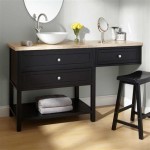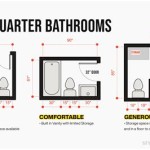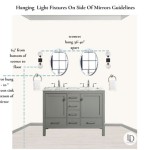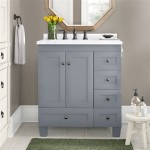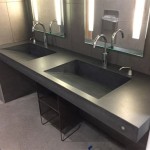How To Remodel Your Bathroom DIY
Embarking on a bathroom remodel can be a daunting task, but with careful planning and a DIY approach, it can also be a rewarding experience. By understanding the key steps involved, gathering the necessary tools and materials, and working diligently, you can transform your bathroom into a haven of relaxation and functionality.
Planning and Preparation
Before diving into the renovation, meticulous planning is essential. Start by defining the scope of the project, considering factors such as budget, desired features, and the extent of the renovation. It is helpful to create a detailed layout plan, both on paper and digitally, to visualize the final design and ensure that all elements, including fixtures, cabinets, and shower enclosures, fit seamlessly. This process includes measuring the existing bathroom dimensions, identifying areas for improvement, and selecting materials that align with your style and budget.
Next, gather the necessary tools and materials. This may include demolition tools, plumbing supplies, electrical components, tiles, grout, paint, sealant, and more. It is advisable to research and purchase high-quality materials that are durable and meet building codes. Ensure you have adequate storage space for all tools and materials during the renovation process.
Safety should always be a top priority. Before starting any work, make sure to turn off the water and electricity supply to the bathroom. Wear appropriate safety gear, such as gloves, goggles, and a respirator, especially when dealing with dust or hazardous materials. Familiarize yourself with the safety precautions associated with using power tools and handling chemicals.
Demolition and Installation
Once the preparation is complete, you can begin the demolition phase. This involves removing existing fixtures, flooring, and walls, as needed. Carefully dismantle the old fixtures, taking note of their connections and plumbing lines. Remove and dispose of debris responsibly. If you are working with asbestos, it is crucial to hire a professional for its removal and disposal to avoid health hazards.
After demolition, you can move onto installation. Start with plumbing and electrical work. This may involve installing new pipes, fixtures, and wiring. It is highly recommended to consult with a licensed plumber and electrician to ensure proper installation and safety standards are met. Once the plumbing and electrical work is completed, you can install flooring, tile, cabinets, and other fixtures.
When working with flooring, ensure that the subfloor is level and even. If necessary, use leveling compound to create a smooth surface for tile installation. Install tile with proper spacing and use grout to fill the joints. Ensure the grout is sealed to prevent moisture and stains from infiltrating the tiles.
For installing cabinets, follow the manufacturer's instructions and use appropriate hardware. Securely attach them to the walls and ensure that they are level. Finally, install the shower or bathtub enclosure, ensuring that it is properly sealed to prevent leaks.
Finishing Touches
After installing all fixtures and elements, you can move onto the finishing touches. This involves painting the bathroom, adding trim, and installing accessories. Choose paints that are specifically designed for bathroom use, as they are moisture-resistant and easy to clean. Install molding and trim to enhance the aesthetic appeal of the bathroom. Select accessories, such as towel bars, shower rods, and toilet paper holders, that complement the overall design.
Finally, add personal touches to create a welcoming atmosphere. This may include installing a shower curtain, adding plants, incorporating decorative accents, or using soft towels and rugs. Remember to clean the bathroom thoroughly after the renovation is complete, removing any leftover debris and ensuring that all surfaces are clean and sanitized.
Additional Tips
While working on your bathroom remodel, it is important to consider the following tips:
Maximize Natural Light
By incorporating natural light into the design, you can create an airy and spacious feel. Consider replacing small windows with larger ones or adding skylights. Positioning mirrors strategically can also enhance the sense of space and brighten the room.
Choose Durable Materials
Select materials that are known for their durability, moisture resistance, and ease of maintenance. This includes tiles, granite countertops, and stainless steel fixtures. Opt for materials that complement each other and create a cohesive design.
Prioritize Storage
A well-organized bathroom is a functional one. Involve storage solutions, such as cabinets, shelves, and drawers, to keep toiletries, towels, and other essentials concealed for a tidy appearance. Consider using vertical space to maximize storage capacity.
By following these steps and incorporating your own creative ideas, you can transform your bathroom into a personalized oasis, enhancing functionality, aesthetics, and overall value.

Bathroom Remodeling A Step By Guide Budget Dumpster

Bathroom Remodeling A Step By Guide Budget Dumpster

Bathroom Remodeling A Step By Guide Budget Dumpster

Bathroom Remodeling A Step By Guide Budget Dumpster

Our Diy Bathroom Remodel On A Budget 13 Inexpensive Ideas

Tips To Makeover A Bathroom On Budget Attley S Reveal

Small Bathroom Ideas To Make Your Efficient

Should You Diy Or Hire A Pro For Your Bathroom Renovation Rambling Renovators

Diy Guest Bathroom Remodel House By Hoff

Bathroom Remodeling A Step By Guide Budget Dumpster
Related Posts
